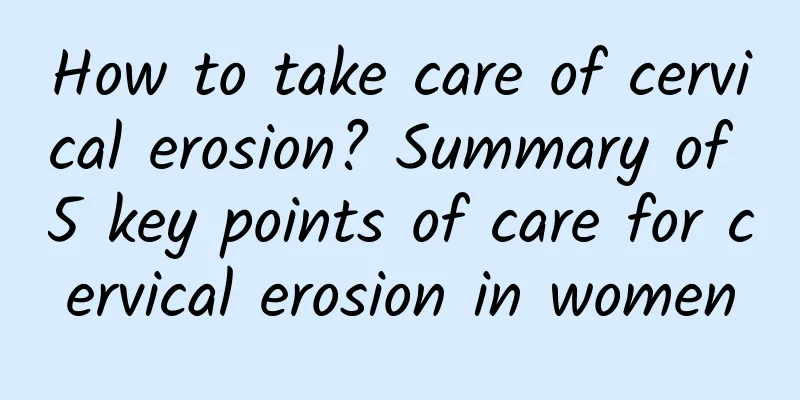Puncture and injection of drugs to treat Bartholinitis

|
Bartholinitis seriously attacks women's bodies and also causes swelling, pain, and abscesses, which seriously affect the patients' lives. We need to pay attention to the existence of this disease and pay attention to the treatment methods in daily life to avoid causing more impacts. Puncture and injection of drugs to treat Bartholinitis have achieved good results in clinical practice. Many people do not know the details very well. The following editor will introduce the treatment methods in detail. Treatment: 1. The treatment time is 3 to 7 days after the end of menstruation. During the operation, the patient takes the lithotomy position, the vulva skin is disinfected with iodine and alcohol, the vagina and vestibule are disinfected with 0.5% chlorhexidine, and a No. 12 empty needle is used to puncture the cyst or abscess to extract the cystic fluid, and then 3% iodine solution is injected. The amount of iodine solution injected is 20% of the extracted cystic fluid, and the maximum amount does not exceed 3 ml. 2. Pull out the needle, press the needle hole for 3 minutes, and apply sterile gauze. 3. Recheck one week after surgery. If the fluid in the cyst is viscous, rinse the cyst cavity repeatedly with normal saline until it is clear, then inject 80,000 units of gentamicin and cover with sterile gauze. For patients with concurrent infection, take 0.4 g of metronidazole orally 3 times a day. Abstain from sexual intercourse for 1 month, and then perform treatment with 3% iodine solution after the inflammation disappears. If there is no abnormality in the follow-up examination within 1 week, the patient should be re-examined 3 to 7 days after the end of the menstruation in the next month. Iodine solution has a broad-spectrum bactericidal effect, and the bactericidal effect is long-lasting and less irritating. When injected into the cyst wall cells, the intracellular protein coagulates and denatures, loses the secretory function, and shrinks the cyst cavity to the point of disappearance. However, during the operation, it is necessary to avoid puncturing too deep, keep the needle in the cyst cavity, and avoid extravasation of the drug solution. Bartholin's gland cyst is a gynecological disease caused by duct obstruction due to inflammation and epithelial metaplasia. Treatments include cyst removal and cystostomy (abscess incision and drainage for those with concurrent infection). All of the above treatments require hospitalization, are prone to bleeding during and after the operation, require daily dressing changes, have slow healing, and have a high postoperative recurrence rate. Bartholin's gland cyst is treated by puncturing the cyst cavity and injecting iodine solution. The treatment goal is achieved by permanently destroying the epithelial tissue of the Bartholin's gland cyst wall. The patient does not need to be hospitalized. The operation is simple, painless and bleeding-free. The patient can move freely after the operation. There is no local scar after healing, and the gland can be preserved, which is easy for patients to accept. The above is an introduction to the puncture and injection of drugs to treat Bartholinitis. I hope it will be helpful to you. |
<<: What topical medications are commonly used to treat Bartholinitis?
>>: What medicine should patients with Bartholinitis take?
Recommend
Eating too much sodium can cause your blood pressure to soar, and here are five major dangers! Nutritionist: Vegetables and whole grains also contain high sodium content
Excessive sodium intake in the diet is not only o...
Do you often suffer from pain, frozen shoulder, and stiff shoulders and neck? Learn 3 stretching exercises to improve!
Basic warm-up 1. Stretching Exercises – Waist Tur...
What are the symptoms of cervical hypertrophy?
Among the cervical diseases of women, cervical hy...
How to regulate blood stasis amenorrhea
Blood stasis amenorrhea refers to amenorrhea caus...
Can dampness cause abnormal vaginal discharge?
A damp environment may cause abnormal vaginal dis...
Drink this to create a slim waist! Chinese medicine doctor Chen Meifei reveals: 3 teas to lose weight and slim your belly
If you want to have a slim and graceful waist lik...
More than 80% of obese people have metabolic fatty liver disease! Endoscopic gastric reduction therapy helps weight loss
Obesity is not a blessing! Overweight people, be ...
What medicine should I take for chronic cervicitis? What are the symptoms of chronic cervicitis in women?
Many friends are asking what medicine to take for...
How much is the cost of uterine fibroid surgery? What are the factors that affect the cost of uterine fibroid surgery?
Although uterine fibroids are not an incurable di...
It is necessary to understand the symptoms of vaginitis
Experts say that through the symptoms of vaginiti...
What is the best thing to eat when you have uterine fibroids? What are the dietary treatment methods for uterine fibroids?
Stir-fried Chinese Yam with Fresh Peaches Ingredi...
How much does a painless abortion surgery cost?
The cost of painless abortion surgery includes su...
What medicine is good for pelvic inflammatory disease
Pelvic inflammatory disease is a pelvic inflammat...
What should I do if bacterial vaginosis recurs?
The recurrence of bacterial vaginosis can general...
Should you eat less starch to lose weight? Is it easy to gain weight if you don’t eat starch? Nutritionist Cheng Mingwei: 4 tips for eating the right starch to lose weight
There are some myths about weight loss among the ...









